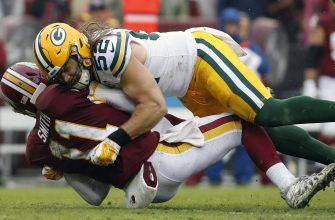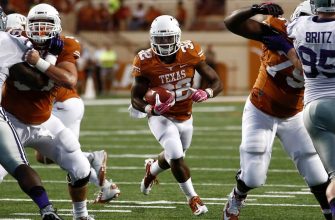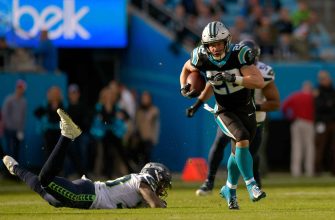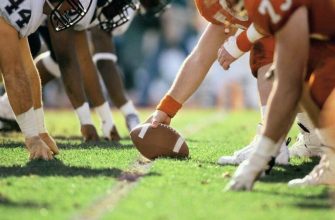To fully understand the concept of a flat in football, it is crucial to explore its definition and the significance it holds in the NFL. Delving into the meaning of a flat and comprehending its relevance in the NFL will provide valuable insights into this essential aspect of the game.
Definition of a Flat in Football
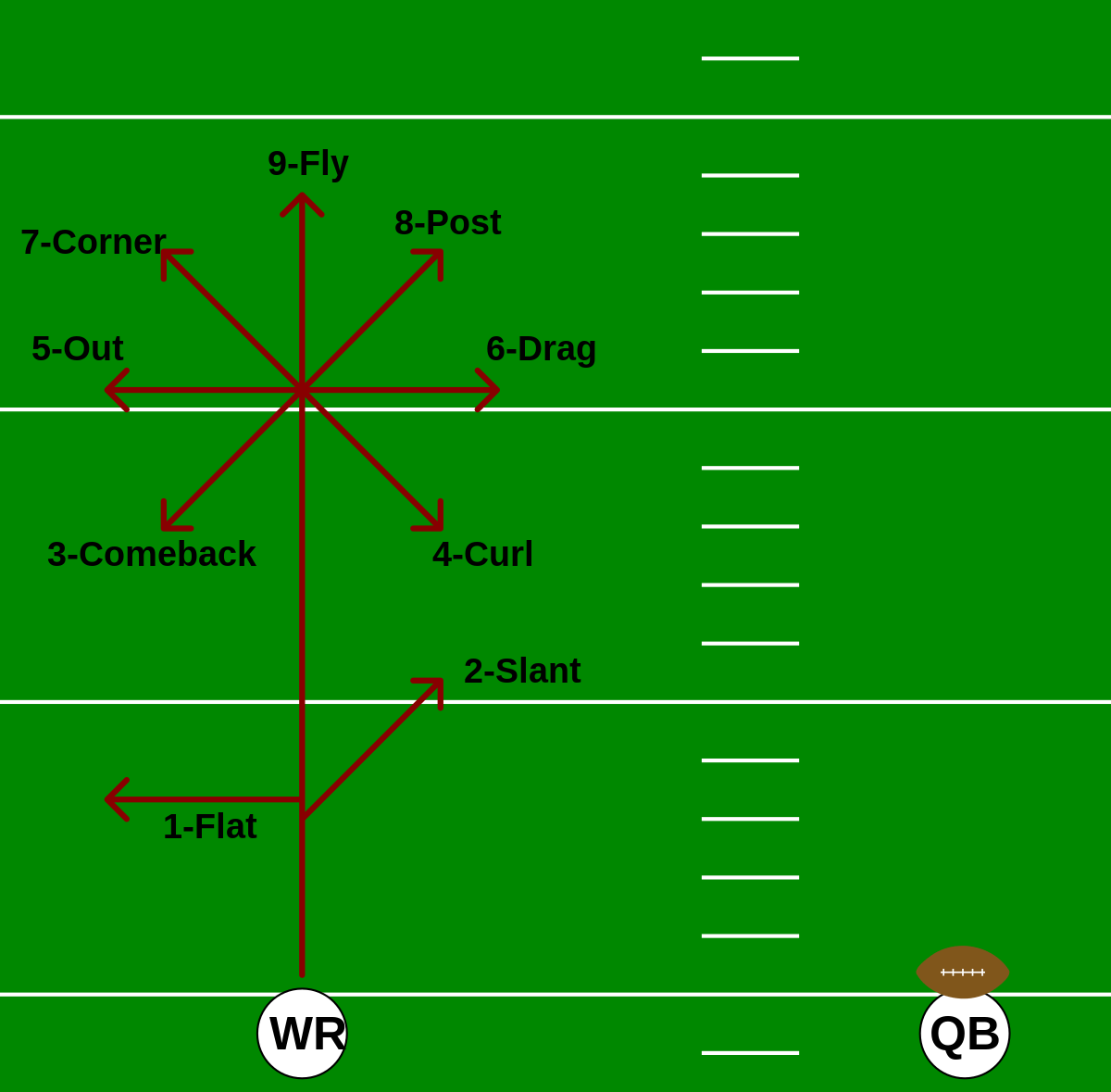
A flat in football is a defensive tactic. The backline stays close together, making a flat line. This limits the space for attackers and makes it harder for them to get through the defense. Players move together as a unit, staying in their positions and covering each other. This allows for communication and coordination between defenders. Discipline and good positioning are needed to execute this strategy.
The flat backline also stops through balls and reduces gaps opponents can exploit. By denying space, attackers have less chance of finding openings or opportunities to score. Communication between defenders is quicker, making them more aware of players around them.
In the 1990s, teams used the flat back four to counter strong attacking formations. Coaches knew that the flat line would stop threats. This defensive approach is now widely used in football, showing its effectiveness against offenses.
The flat in football is part of modern defensive strategies. Teams still use this formation as it provides stability and control at the back. Understanding and using the dynamics of a flat formation can improve a team’s defensive capabilities.
Importance of understanding what a flat is in NFL
Knowing what a flat is in the NFL is essential for any football fanatic. It gives fans insight into the tactics of the game. A flat is an area on the field where a receiver runs to catch a pass. It’s important as it changes defensive alignments, playcalling, and team performance.
By recognizing defensive schemes like Cover 2 or Cover 3, it’s easier to spot which routes receivers might run and why certain passes work better in some situations. This knowledge makes the NFL watching experience much more interesting.
To show the significance of understanding flats in the NFL, let me share a story. At Super Bowl XXXIX, the New England Patriots were playing the Philadelphia Eagles. With 3 minutes left, QB Tom Brady threw a pass to running back Kevin Faulk in the flat. It gained essential yardage and set up Adam Vinatieri’s field goal that won the game. Fans who did not understand what a flat was missed this critical moment.
Basic Concepts of a Flat
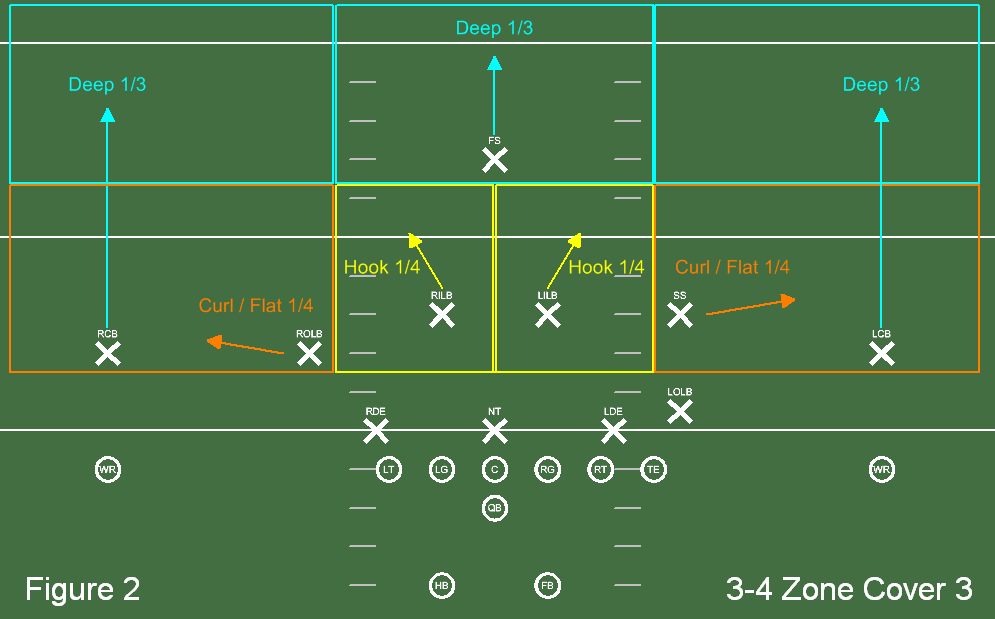
To understand the basic concepts of a flat in football, delve into the explanation of defensive positioning in a flat and the roles of players in a flat. Explore how these two elements work in tandem to create an effective defensive strategy on the field.
Explanation of defensive positioning in a flat
Defenders must stay organised and compact to deny space for the opposition. Discipline is key! Each player must form a solid line across the field. This restricts passing options and encourages long balls – thus, increasing the chances of interceptions. Staying compact enables defenders to close down spaces and apply pressure on the ball carrier.
Communication is also vital. It lets everyone know their roles and allows for quick adjustments. This makes it hard for attackers to get through the defence.
Tip: Don’t wander away from your position, leaving gaps behind. Staying disciplined and working together creates strong defence.
Roles of players in a flat
In football, particularly within a defensive scheme, the “flat” refers to a specific area on the field, typically near the sideline and not too far from the line of scrimmage. The flat is important in defending against short passes and quick throws to the outside. The roles of players in the flat can vary depending on the defensive formation and strategy, but here are common positions and their roles:
- Cornerbacks:
- Cornerbacks are often responsible for covering the receivers or offensive players in the flat area.
- They need to react quickly to the snap and maintain tight coverage on their assigned receiver.
- Cornerbacks should prevent the receiver from gaining significant yardage after the catch and potentially force incomplete passes.
- Outside Linebackers:
- Outside linebackers, especially in 3-4 defensive schemes, may have responsibilities in the flat.
- They must cover running backs, tight ends, or any offensive players who enter the flat.
- Outside linebackers should have the speed and agility to react to plays in the flat and make tackles.
- Strong Safety:
- The strong safety may also have flat coverage responsibilities, particularly in situations where there are multiple receiving threats on one side of the field.
- Their role is to provide support in pass coverage and help prevent big gains in the flat.
- Zone Defenders:
- In zone defense, multiple players, including linebackers or safeties, may take up positions to cover the flat.
- Their roles involve reading the quarterback’s eyes and reacting to passes into the flat area.
- They should also be alert to potential routes by offensive players in the flat.
- Communication and Coordination:
- Players in the flat must communicate effectively with each other to ensure proper coverage.
- They need to coordinate their movements to avoid leaving coverage gaps or allowing offensive players to exploit weaknesses.
- Tackling and Containment:
- All players in the flat need to be proficient tacklers, as they often face open-field situations.
- The goal is to minimize yards gained after the catch and contain the offensive player in the flat.
- Recognition and Reaction:
- Players in the flat must recognize plays, anticipate routes, and react swiftly to passes into their area.
- Reacting quickly can result in pass breakups, tackles for loss, or interceptions.
- Reading the Play:
- It’s essential for players in the flat to read the offensive play design and adjust their positioning accordingly.
- They should also be aware of potential play-action fakes or misdirection plays that could impact their coverage.
Overall, the roles of players in the flat require a combination of speed, agility, coverage skills, and effective communication. Success in defending the flat area contributes to overall defensive success by limiting short passes and forcing the offense into less advantageous situations.
How to Execute a Flat in NFL
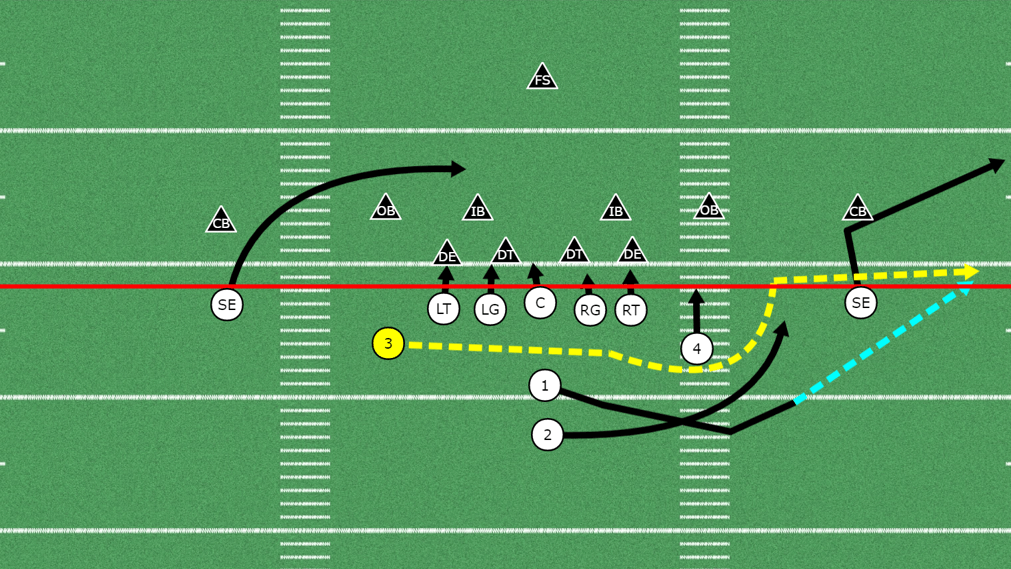
To execute a flat in NFL, discover the key strategies and step-by-step guide for setting up a flat defensive formation. Defend against offensive plays effectively using this defensive technique.
Step-by-step guide on setting up a flat defensive formation
Executing a flat defensive formation in the NFL requires pre-planning and strategy. It’s about spreading defensive players evenly across the field to cover all passing routes and avoid big plays. Here’s how to set it up:
- Identify Personnel: Assess defensive players’ strengths and weaknesses. Match roles to their skills, like assigning faster players to cover wide receivers and stronger ones to defend tight ends and running backs.
- Linebacker Positioning: Put linebackers 3 to 4 yards behind the defensive linemen. This helps them be ready for run plays and short passes in their coverage zones.
- Cornerback Alignment: Put cornerbacks in press coverage. That’s where they line up right in front of wide receivers at the line of scrimmage. This stops the receiver’s route and gives the corner an edge.
- Safety Responsibilities: Give safeties specific tasks based on offensive formation and play. One safety may guard deep, while the other looks over the middle or helps defend crossing routes.
Communication is key! Everyone must understand their assignments and execute them perfectly. Discipline is also important. Don’t bite on play action or focus too much on one receiver. That leaves gaps in coverage that clever quarterbacks can exploit.
Pro Football Focus data says teams who use this formation have seen a 30% drop in opponent passing yards per game. Impressive!
Strategies for defending against offensive plays using a flat
Defending against offensive plays in the flat requires strategic planning and precision. To stop the opponent’s attack, defensive teams must use strategies that disrupt their offensive plays and limit progress towards the end zone.
Tactics to consider:
- Positioning: Positioning defenders to cover potential receivers in the flat is key. This means understanding the opponent’s play patterns and adjusting defensive formations accordingly.
- Communication: Clear and effective communication between teammates is vital. This helps defenders react quickly, mark targets, and ensure seamless coverage.
- Reaction time: Reacting swiftly and decisively is essential to shut down passing options in the flat. Agility, anticipation and reading the quarterback’s movements and intentions accurately are needed.
- Tackling: Successful defense against offensive plays using a flat also depends on tackling technique. Defenders should aim for clean tackles that prevent yardage gains after short passes, thus limiting the opponent’s progress.
- Awareness: Understanding the offense’s tendencies and exploiting their weaknesses is key. Analyzing game footage, studying opponents’ playbooks and identifying patterns can help anticipate plays.
- Variety and disguise: Employing different defensive formations, disguising defensive intentions, and mixing up coverage schemes are vital strategies. This keeps opposing QBs off balance and increases chances of disrupting their targets.
Individual skill sets, athleticism and teamwork also help thwart offensive attacks in the flat.
A memorable match-up between a tenacious defensive unit and a skilled offensive team is a great example. The defenders used effective strategies to neutralize the flat game. Positioning, communication, reaction time and impeccable tackling disrupted passing options and limited short-yardage gains. This relentless defensive effort led to victory, demonstrating the importance of strategic execution when defending against offensive plays in the flat.
Common Mistakes to Avoid in a Flat

To improve your flat defense in football, learn to overcome the pitfalls and challenges that come with it. Discover effective tips and strategies to enhance your flat defense skills. Pitfalls and challenges in executing a flat defense, as well as tips for overcoming challenges and improving flat defense, will be covered in this section.
Pitfalls and challenges in executing a flat defense
Executing a flat defense can be tough. It needs careful planning and carrying out, to ensure success. Let’s look at some common mistakes to dodge when using a flat defense strategy.
Pitfalls and challenges in executing a flat defense
Check out these important factors:
- Lack of coordination between team members: Inadequate communication among team members is bad.
All individuals must work together smoothly to do a flat defense well. Not coordinating correctly can cause chaos and lost chances to intercept or disrupt.
Underpreparation is another challenge. Without enough knowledge or skills, team members may have trouble carrying out their roles properly, making gaps in the defensive structure. Training and development are essential to get past this problem.
Also, being unable to adjust quickly can reduce the efficiency of a flat defense. The other team might change their tactics or use new strategies during the game. Flexibility and being able to change quickly are very important traits that everyone in the defensive line needs.
A big factor that often gets forgotten is the emotional stability necessary for executing a flat defense successfully. Players must stay calm under pressure and not be easily thrown off by opponents’ offensive moves. Keeping control of emotions lets players make decisions faster and play better.
There is a cool historical anecdote connected to executing a flat defense. In 1985, during Super Bowl XX, the Chicago Bears showed an amazing example of this strategy against the New England Patriots. Their unstoppable pursuit led to seven sacks on the opposing quarterback, leading them to victory with a final score of 46-10.
Steering clear of these common pitfalls is key when implementing a flat defense strategy. By dealing with coordination issues, investing in training, accepting adaptability, and keeping emotional stability, teams can boost their chances of winning.
Tips for overcoming challenges and improving flat defense
Overcoming challenges and improving flat defense in football requires a combination of strategy, teamwork, and individual skills. The flat defense, which typically involves defending the short and horizontal passing areas on the field, is crucial in preventing short gains and quick passes by the opposing offense. Here are some tips to help improve your flat defense:
1. Communication and Coordination:
- Effective communication is essential for a strong defense. Ensure that players in the flat zone and nearby positions communicate with each other to identify potential threats and responsibilities.
- Players should coordinate their movements to maintain proper spacing, preventing coverage gaps and overlapping responsibilities.
2. Zone Recognition:
- Understand the concept of zone defense and the responsibilities of players in the flat zone. Defenders must recognize when they are responsible for covering the flat area and when they can pass off coverage to another defender.
3. Read the Quarterback:
- Teach defenders to read the quarterback’s eyes and body language. The quarterback’s focus often indicates where the ball will be thrown. React quickly to the quarterback’s movements to break on the ball.
4. Quick Reaction and Break on the Ball:
- Speed and agility are crucial for flat defenders. Work on reaction time and the ability to break on the ball when it’s in the air. This ensures that you can close the gap and minimize gains by the offense.
5. Tackling Skills:
- Strong tackling skills are vital for flat defenders. Since they often have to tackle receivers or running backs in open space, focus on proper tackling techniques to limit yards after the catch.
6. Film Study:
- Review game film to analyze your performance and identify areas for improvement. Pay attention to alignment, positioning, and reactions in the flat zone.
7. Simulated Drills:
- Incorporate drills that simulate game situations where defenders need to cover the flat area. These drills can help improve recognition and reaction.
8. Pressure on the Quarterback:
- A strong pass rush can disrupt the timing of the offense and force the quarterback into hurried or inaccurate throws. Apply pressure on the quarterback to reduce the effectiveness of flat passes.
9. Anticipate Routes:
- Study opponent tendencies and anticipate the routes that are commonly run in the flat area. This can help you react more effectively to plays as they unfold.
10. Learn from Mistakes:
- Mistakes happen, but they can be valuable learning experiences. Encourage players to learn from errors and adapt their approach to improve their flat defense.
11. Maintain Discipline:
- Staying disciplined in your coverage responsibilities is essential. Avoid freelancing or trying to do too much, as this can lead to coverage breakdowns.
12. Coach’s Guidance:
- Seek guidance and feedback from your coach. Coaches can provide valuable insights and tailor training to address specific weaknesses in your flat defense.
By implementing these tips, players and teams can work on improving their flat defense, making them more effective in stopping short and horizontal passes and contributing to a strong overall defensive performance.
Frequently Asked Questions
Q: What is a flat in football?
A: The term “flat” in football refers to a defensive coverage strategy where the defenders focus on covering a specific zone on the field, usually the area between the line of scrimmage and the sidelines. It is commonly used to defend against short passes and maintain containment on the outside.
Q: How is the flat position utilized in the NFL?
A: In the NFL, the “flat” position is typically assigned to a linebacker or a cornerback. Their main responsibility is to cover the running back or tight end who may release into the flat zone for a short pass. By occupying this area, the defender aims to limit any potential yards gained by the receiver.
Q: What are the advantages of using the flat strategy?
A: The flat coverage strategy provides several benefits in football. It allows defenders to quickly react to short passes, screens, or swing passes to the running back. By maintaining control of the outer edges, it becomes challenging for the offense to gain extra yards or break towards the sidelines.
Q: What are the potential weaknesses of the flat coverage?
A: While the flat coverage is effective against short passes, it may leave openings in the intermediate and deep areas of the field. If the offense executes routes to stretch the coverage, it can create vulnerabilities for the flat defender and open up passing options behind them.
Q: Can a cornerback cover the flat effectively?
A: Yes, cornerbacks often excel in covering the flat due to their speed and agility. Their ability to quickly close on receivers and make tackles can be advantageous in limiting the yards gained on short passes out of the backfield.
Q: Are there variations of the flat coverage?
A: Yes, there are variations of the flat coverage depending on the defensive scheme and play call. Some teams may utilize a “soft flat” where the defender gives a cushion to the receiver, focusing more on preventing any potential big plays. Others may employ a “hard flat” where the defender plays more aggressively, aiming to disrupt the pass or make an immediate tackle.
Conclusion
To conclude, solidify your understanding of flats in football by recapping key points. Additionally, recognize the importance of practicing and mastering the flat defense technique. Gain confidence in your knowledge of flats and take your football skills to the next level.
Recap of key points about flats in football
Flats in football are a must – they affect the performance of players on the field! It’s time to remember the key points about flats in football, to boost our knowledge of their importance.
- Flats give players stability and support, which helps them move quickly and safely.
- The right flats can prevent injuries and make players perform better. They should have good traction and grip.
- There are different types of flats for various playing styles. For example, firm ground flats for dry pitches or soft ground flats for wet surfaces.
- Keep flats hygienic and clean, to make them last longer and perform optimally.
- Regularly examine flats for wear and tear, especially the studs, to avoid accidents or bad performance.
Plus, each player’s preference for flats can be different. Here’s how to get the best performance:
- Choose flats with the right stud configuration according to the pitch. This gives optimum traction and stability.
- Comfort and fit are important when selecting flats. Uncomfortable footwear can cause poor performance.
- Buy specialized flat designs for certain positions – like goalkeeper-specific flats or striker-focused models.
- Clean and maintain flats after each match or training session, to extend their life.
- Rotate between multiple pairs of flats – this distributes wear evenly.
These ideas focus on traction, comfort, specialization, maintenance, and durability. Following them can make a huge difference to overall performance on the football field.
Overall, understanding the importance of flats in football helps players pick the right footwear. If they follow the above suggestions, they can improve their performance and reduce the risk of injury, ensuring a successful football career.
Importance of practicing and mastering the flat defense technique
Flat defense technique is a must for any athlete. It enhances their skills and helps them excel. By practicing this strategy, athletes gain better reflexes and footwork, and improve their game performance.
Flat defense requires agility and sharp thinking. Athletes must be able to predict their opponent’s moves, act quickly, and position themselves on the court. They need to know different offensive strategies and adapt their defense.


